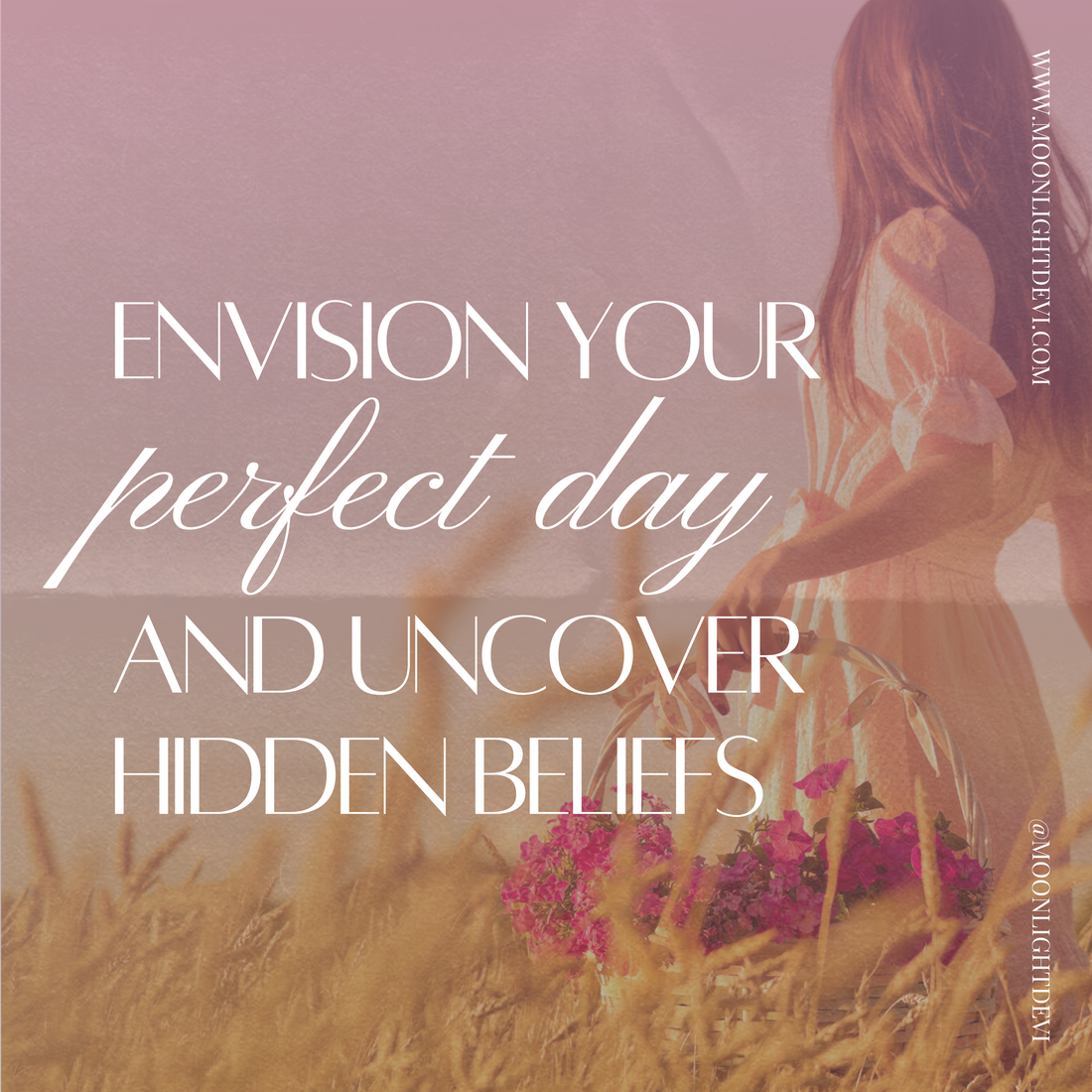
Envision Your Perfect Day and Uncover Hidden Beliefs
Share
Imagine this: You wake up in the morning feeling completely at peace, knowing that today is going to be extraordinary. Everything flows perfectly, from the moment your eyes open to the time you drift off to sleep at night. It’s your perfect day—every detail just as you want it. But what if that vision holds more power than you realize?
In the hustle and bustle of daily life, we often forget to pause and ask ourselves what we truly want. We get so caught up in routines, responsibilities, and the expectations of others that our own desires take a back seat. But what if you could tap into the life you’ve always dreamed of, simply by envisioning it?
The Power of Envisioning
Envisioning your perfect day is more than just a fun exercise—it’s a powerful tool for self-discovery. When you take the time to imagine your ideal day, you’re tuning into what truly matters to you. You’re aligning your thoughts and emotions with the life you want to create. But there’s more to this process than you think.
As you start to visualize your perfect day, pay attention to the details. What do you see? Where are you? Who are you with? How do you feel? What do you smell? The more vivid and detailed your vision, the more powerful it becomes. But here’s where we tend to self sabotage ourselves—if you find yourself thinking, “This could never happen,” or “That’s just a dream,” you’re bumping up against something incredibly important: your self-limiting beliefs.
Uncovering Self-Limiting Beliefs
Self-limiting beliefs are the invisible barriers we build around ourselves. They’re the thoughts and beliefs that tell us we’re not good enough, that we don’t deserve happiness, or that our dreams are out of reach. These beliefs are often rooted in past experiences, societal conditioning, or the opinions of others. And they can be sneaky, showing up as doubts, fears, or excuses that keep us from pursuing what we truly want.
When you envision your perfect day, you’re likely to encounter these beliefs head-on. You might think, “I’d love to spend the day by the ocean, but I can’t afford to live near the coast,” or “I want to spend more time with my family, but my job demands too much of my time.” These thoughts are your self-limiting beliefs making themselves known.
But here’s the good news: Once you identify these beliefs, you can start to challenge them.
How to Identify and Challenge Your Beliefs
Start by writing down your perfect day in as much detail as possible. Let your imagination run wild—don’t hold back! Once you’ve written it out, go back and read through your description. Pay close attention to any thoughts that arise, especially those that tell you something isn’t possible.
Next, take a separate piece of paper and write down each of these self-limiting beliefs. For example, if you wrote, “I can’t afford to live near the ocean,” write that down. Then, challenge it. Ask yourself, “Is this really true? Is there another way I could make this happen?” Often, we find that our beliefs are based on assumptions or fears, rather than facts.
The Path to Transformation
The act of envisioning your perfect day isn’t just about creating a wish list—it’s about uncovering the beliefs that have been holding you back and challenging them head-on. By doing this, you’re taking the first step toward transforming your life. You’re giving yourself permission to dream big, to believe in your own potential, and to start creating a life that aligns with your true desires.
Remember, your perfect day is not just a fantasy—it’s a glimpse into what’s possible when you let go of limiting beliefs and step into your true power. The more you practice this exercise, the more you’ll begin to see those beliefs dissolve, making room for new possibilities and opportunities.
So, take a moment today to envision your perfect day. Write it down, uncover those hidden beliefs, and challenge them. You might just find that the life you’ve always dreamed of is closer than you think.
Remember, choose you, love you, pick you.
Love & Light,
Sarai